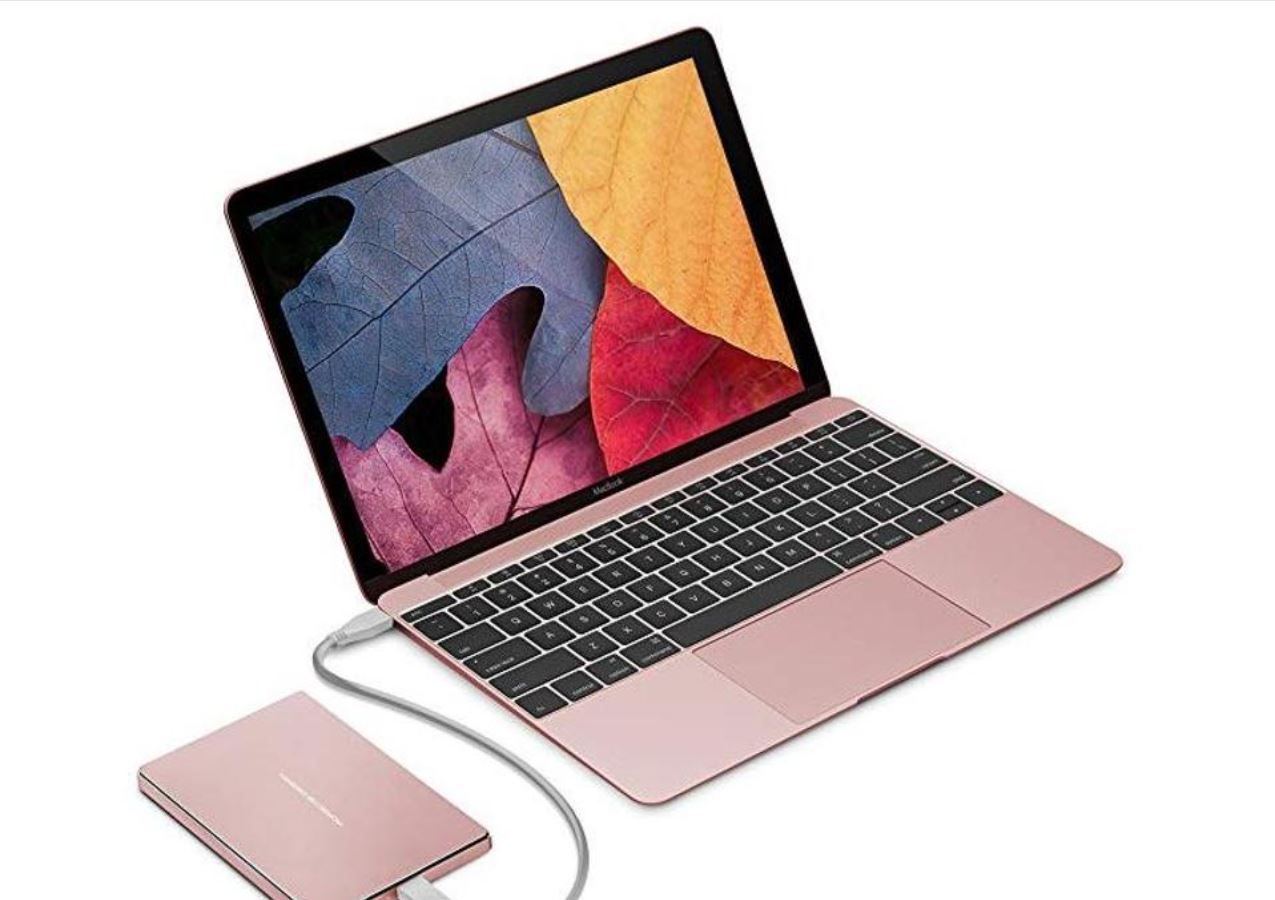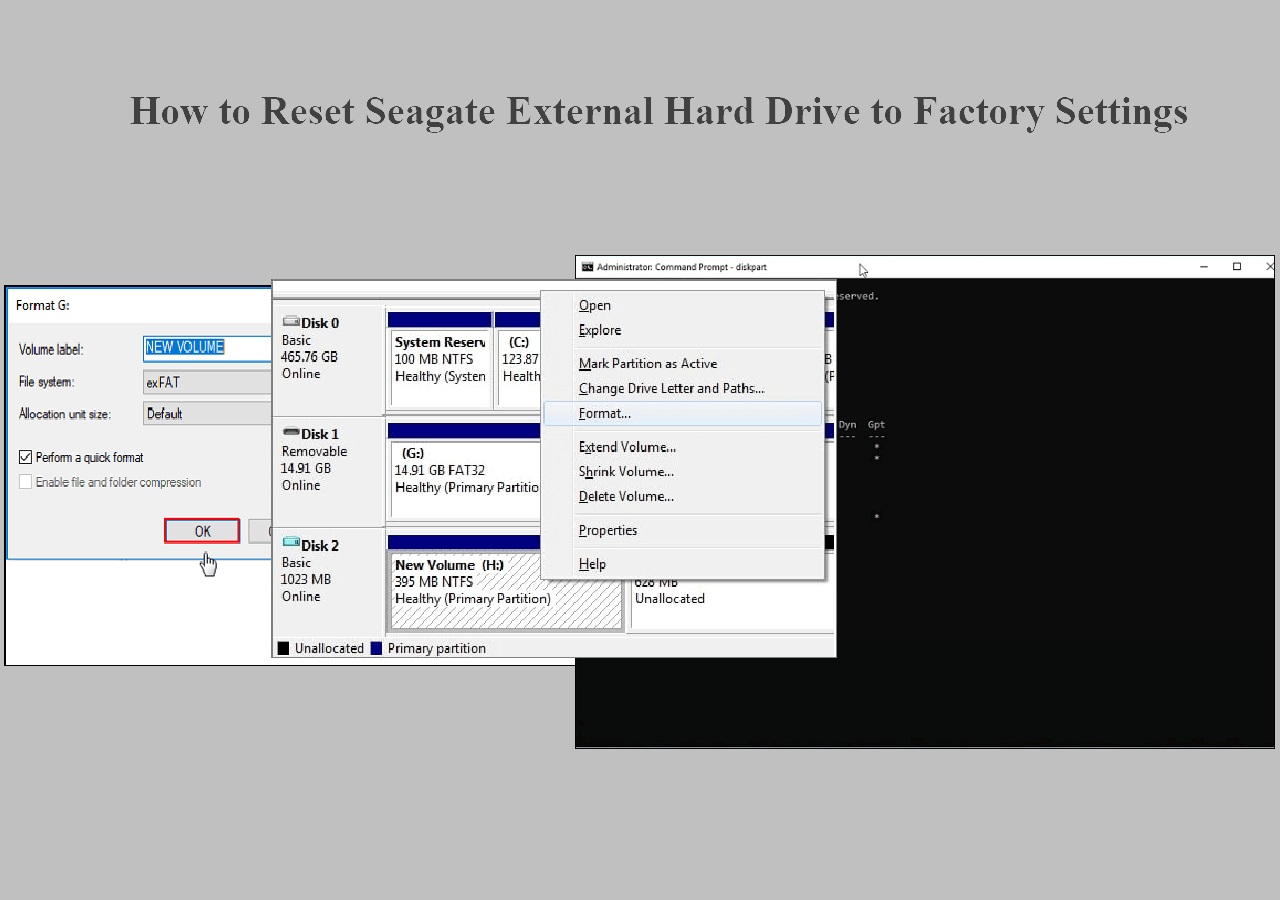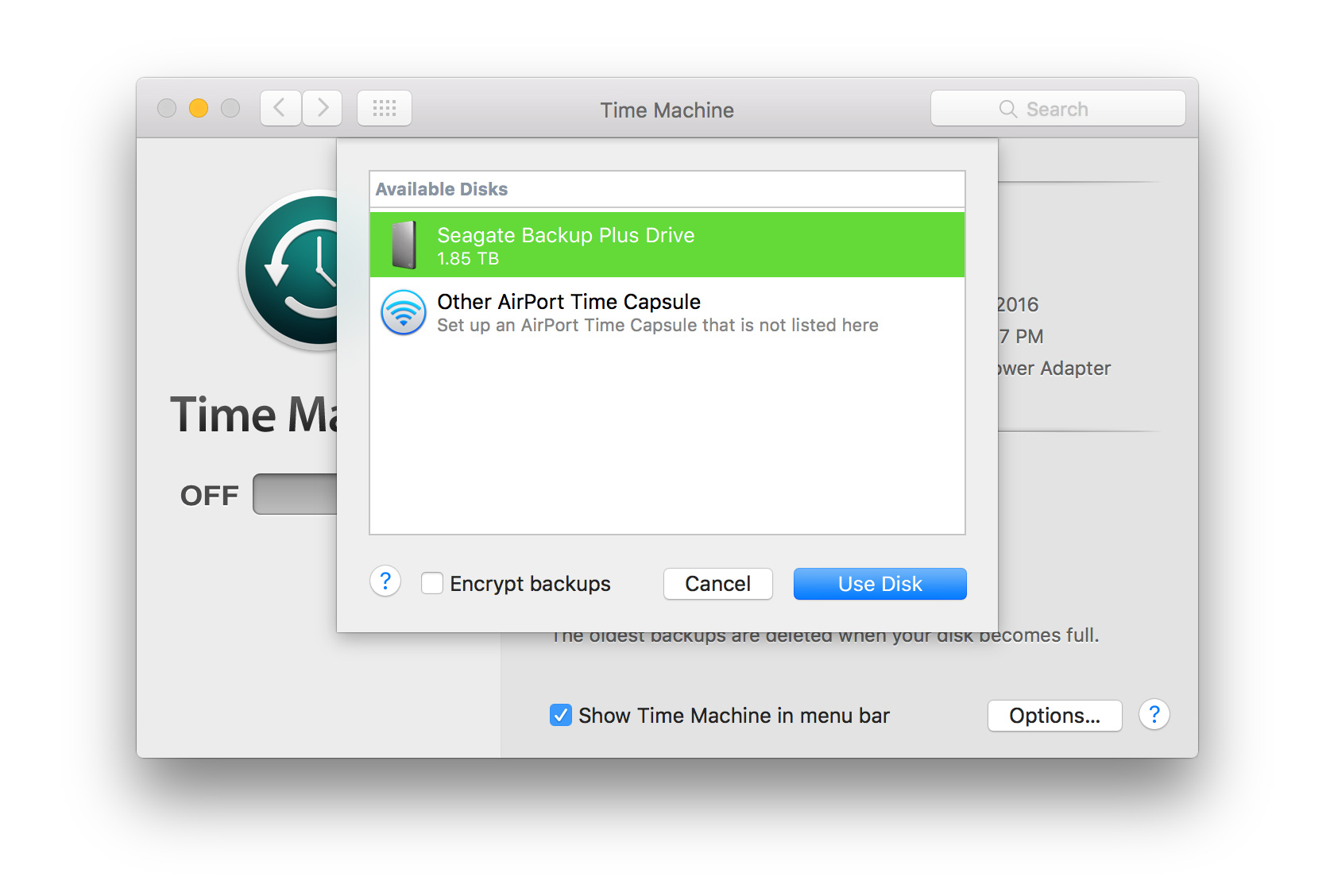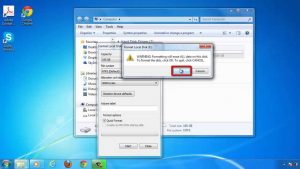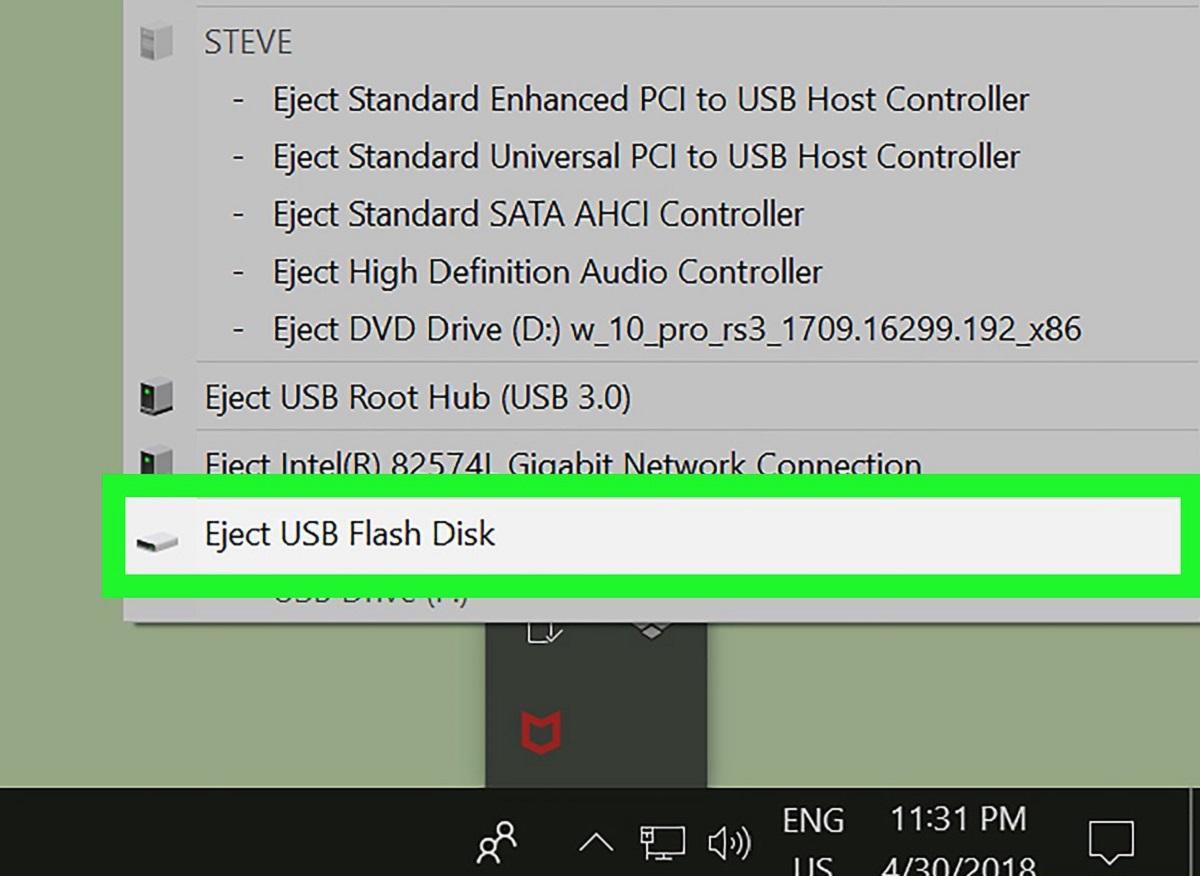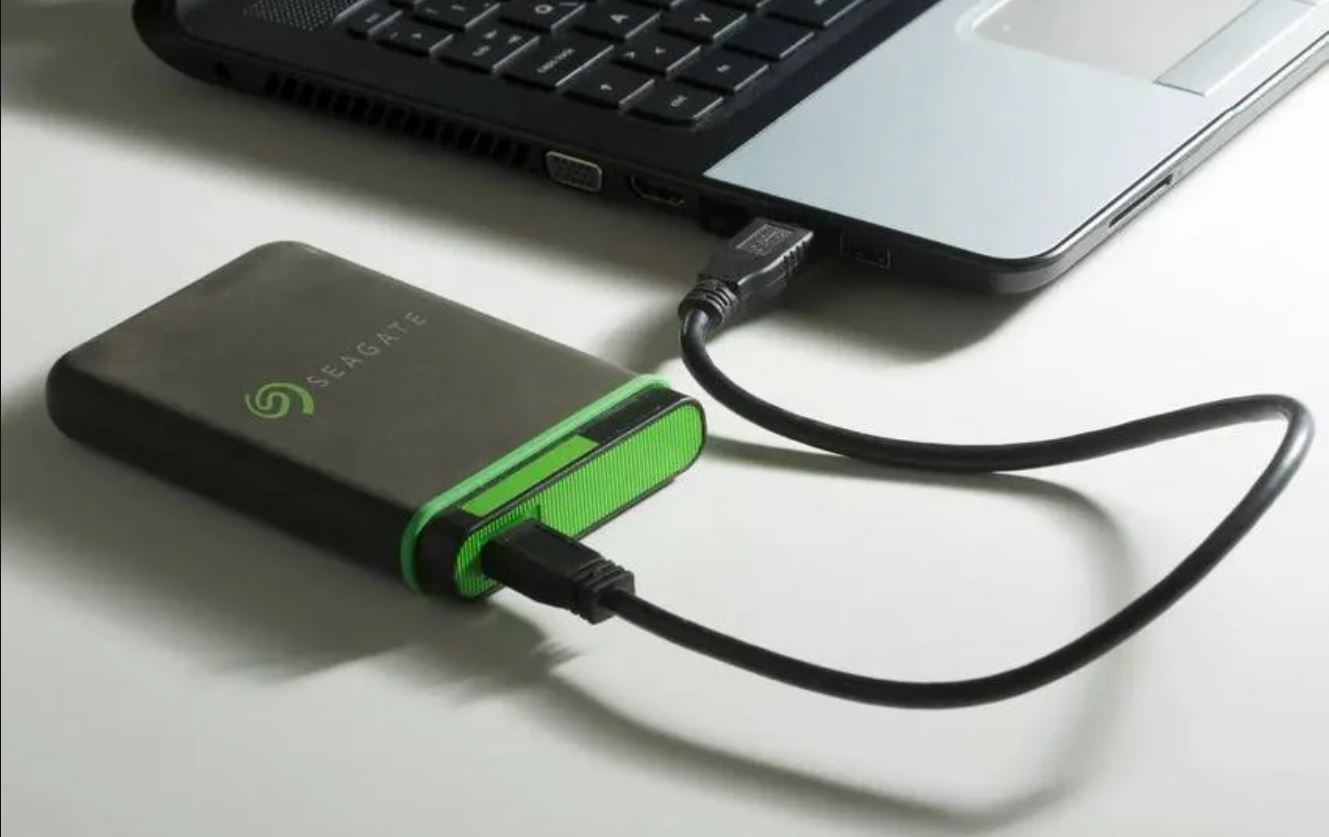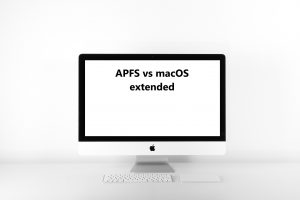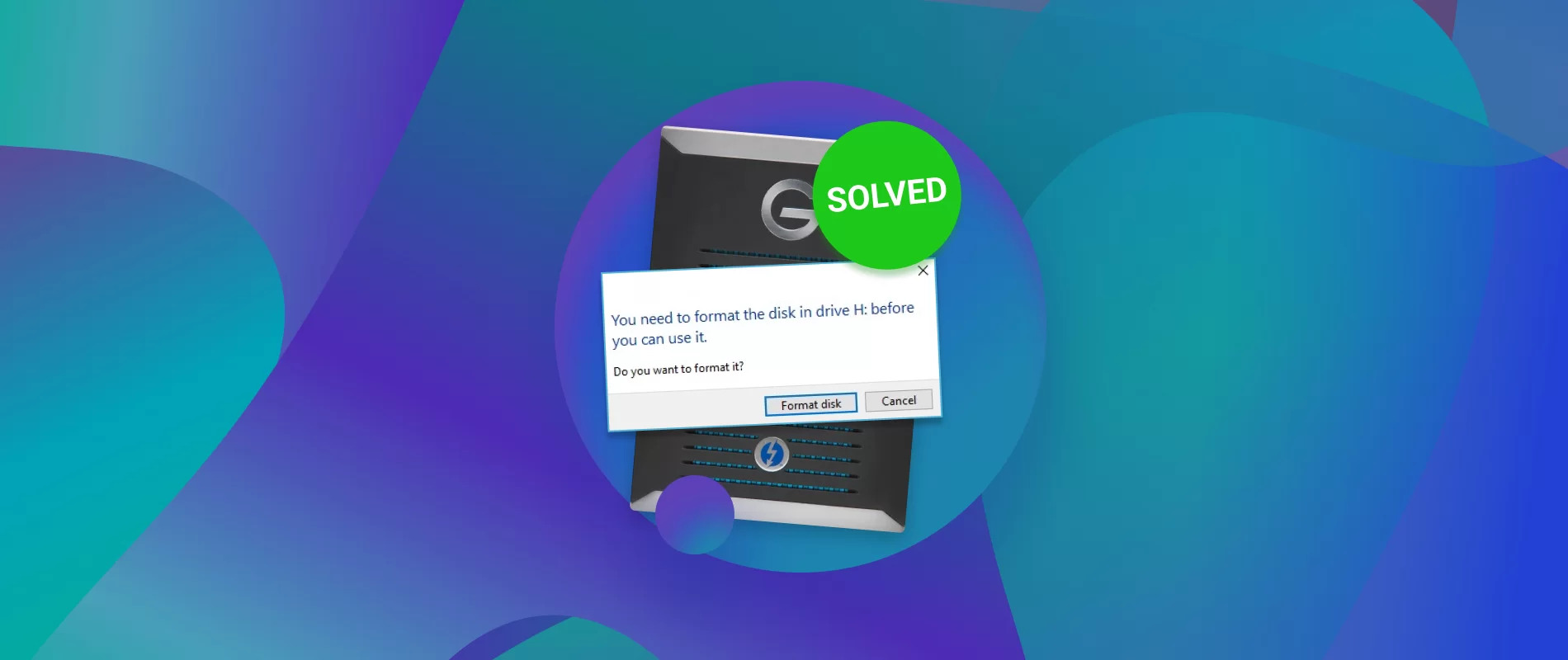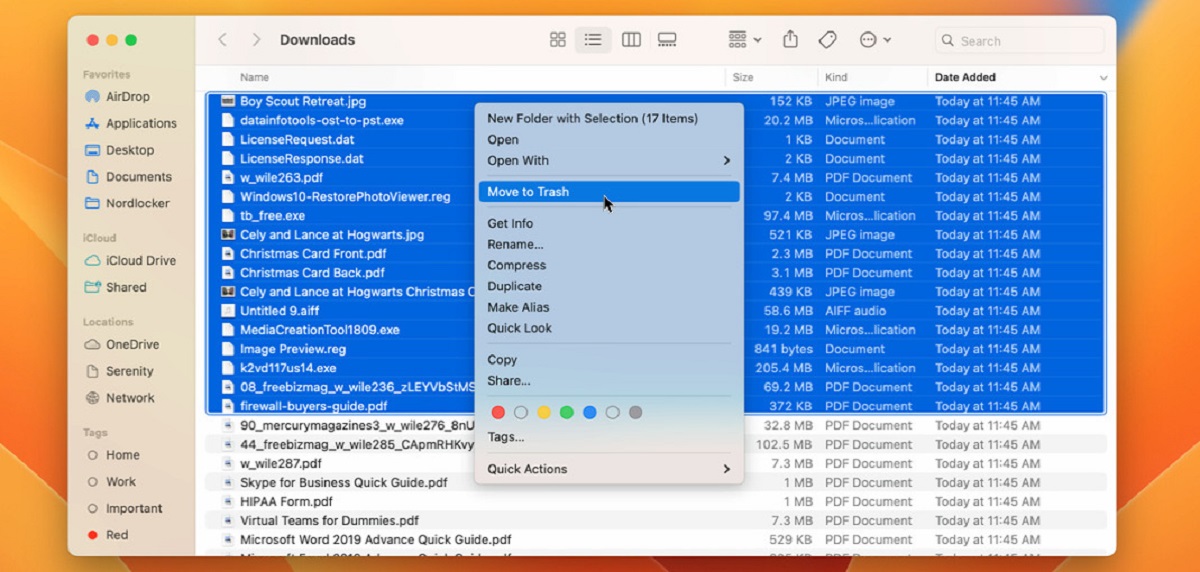Introduction
Welcome to the digital age, where external hard drives have become an essential tool for storing and accessing large amounts of data on our Mac computers. However, it can be incredibly frustrating when our trusty external hard drives start to slow down, hampering our productivity and causing delays in accessing our files.
Fortunately, in this article, we will explore the reasons why your external hard drive might be running slower on your Mac and provide you with effective solutions to get it back up to speed.
External hard drives are a popular choice among Mac users due to their portability, storage capacity, and convenience. They allow us to store and transport large files, backup important data, and expand our storage capabilities beyond the limitations of our internal hard drive. However, just like any other technology, external hard drives can encounter performance issues over time.
There could be several factors contributing to the sluggishness of your external hard drive on your Mac. It could be related to the hardware, such as a faulty USB connection or an outdated firmware. It could also be due to software issues, such as fragmented files or resource-intensive background processes. By identifying and addressing these issues, you can optimize the performance of your external hard drive and regain its speed.
In the following sections, we will discuss some common causes of slow external hard drives on Mac and provide you with practical solutions to speed up your device. Whether you’re a professional needing quick access to your project files or a casual user wanting to enjoy seamless media playback, these tips will help you overcome the frustration of a slow external hard drive on your Mac.
Why is my external hard drive slow on Mac?
Before we dive into the solutions, it’s important to understand the potential causes behind a slow external hard drive on your Mac. By identifying the root causes, you can better address the issues and improve the performance of your device.
One common reason for a slow external hard drive on Mac is a faulty USB connection. If the connection between your Mac and the external hard drive is not stable or if there is a problem with the USB cable itself, it can significantly impact the transfer speed and overall performance of the device.
Outdated firmware is another culprit that can slow down your external hard drive. Firmware acts as the software that controls the operation of your device, and outdated firmware may not be optimized for the latest macOS updates, leading to decreased performance.
Fragmented files can also contribute to a slow external hard drive. As you add and delete files over time, the data on your hard drive can become fragmented, meaning that it is scattered across different physical locations. This fragmentation can lead to longer read and write times, resulting in slower performance.
Additionally, resource-intensive background processes or applications running on your Mac can impact the performance of your external hard drive. These processes use up system resources and can monopolize the available bandwidth, causing your external hard drive to operate at a slower speed.
Lastly, using a slow USB port or not utilizing the full potential of Thunderbolt connections can affect the speed of your external hard drive. Different USB ports have different data transfer capabilities, with USB 2.0 being slower than USB 3.0 or Thunderbolt connections.
By understanding these possible causes, you can now delve into the solutions that will help you speed up your external hard drive on your Mac. Let’s explore these solutions in the following sections.
Common causes of slow external hard drives on Mac
When your external hard drive is running slower than expected on your Mac, there are several common causes that could be behind this issue. By identifying these causes, you can pinpoint the source of the problem and take appropriate steps to resolve it.
1. Faulty USB Connection: A loose or faulty USB connection can severely impact the speed of your external hard drive. Ensure that the USB cable is securely connected to both your Mac and the external hard drive. If possible, try using a different USB cable or port to see if that resolves the issue.
2. Outdated Firmware: The firmware on your external hard drive acts as its internal software, governing its operation. Outdated firmware can cause compatibility issues with the latest macOS updates, resulting in reduced performance. Check the manufacturer’s website for any firmware updates for your specific external hard drive model and follow the instructions to update it.
3. Fragmented Files: Over time, as you add and delete files, your external hard drive can become fragmented, with data scattered across different physical locations on the drive. This fragmentation can lead to slower read and write speeds. To address this, you can use macOS’s built-in Disk Utility to defragment your external hard drive and optimize its performance.
4. Resource-Intensive Background Processes: Certain resource-intensive processes or applications running on your Mac can hog system resources and bandwidth, impacting the performance of your external hard drive. Monitor your system’s activity using Activity Monitor (found in the Utilities folder) and close any unnecessary background processes or applications that may be affecting your external hard drive’s speed.
5. Slow USB Ports or Thunderbolt Connections: Not all USB ports or Thunderbolt connections are created equal. If you are using an older USB 2.0 port, it will have slower data transfer speeds compared to USB 3.0 or Thunderbolt connections. Ensure that you are utilizing the fastest available ports on your Mac for optimal performance.
By familiarizing yourself with these common causes, you will be better equipped to diagnose and fix the slowdown issues on your external hard drive. In the next section, we will explore effective solutions to speed up your external hard drive on your Mac.
Solutions to speed up your external hard drive on Mac
When your external hard drive is running slow on your Mac, there are several steps you can take to improve its performance. The following solutions will help you optimize your external hard drive’s speed and enhance your overall user experience.
1. Check your USB connection: Ensure that the USB cable is securely plugged in at both ends – your Mac and the external hard drive. If possible, try using a different USB cable or port to rule out any issues with the connection.
2. Update your macOS and external hard drive firmware: Keep your macOS up to date by installing the latest updates from Apple. Additionally, check the manufacturer’s website for any firmware updates specifically designed for your external hard drive model, and follow their instructions to update it.
3. Defragment your external hard drive: Use the Disk Utility application on your Mac to defragment your external hard drive. This process rearranges the fragmented data and allows for quicker access to your files, improving overall performance.
4. Use a USB hub with external power supply: If you are using multiple devices through a USB hub, consider using a hub with its own power supply. This can help ensure stable power delivery to your external hard drive and prevent performance issues due to insufficient power.
5. Disable Spotlight indexing for your external hard drive: Spotlight indexing, a macOS feature that enables quick search functionality, can consume system resources and slow down your external hard drive. To disable indexing for your external hard drive, go to System Preferences > Spotlight > Privacy, then drag and drop your external hard drive into the list.
6. Disable Time Machine backups for your external hard drive: Time Machine backups can run in the background and impact the speed of your external hard drive. To disable Time Machine backups for your external hard drive, go to System Preferences > Time Machine and remove the external hard drive from the list of backup sources.
7. Use a faster USB port or Thunderbolt connection: If your Mac has multiple USB ports or Thunderbolt connectivity, try using a faster port for your external hard drive. USB 3.0 and Thunderbolt ports generally offer faster data transfer speeds compared to older USB 2.0 ports.
8. Replace the USB cable: If you suspect that the USB cable is causing the slowdown, try using a different USB cable to see if it resolves the issue. A faulty or damaged cable can hamper the performance of your external hard drive.
9. Format your external hard drive to a faster file system: Formatting your external hard drive to a more efficient file system, such as exFAT or HFS+, can improve speed. However, backing up your data before formatting is essential since it erases all existing data on the drive.
10. Check for any malware or viruses: Run a thorough scan using robust antivirus software to ensure that your external hard drive is free from any malicious software. Viruses or malware can significantly slow down your device’s performance.
11. Clean up your external hard drive: If your external hard drive is filled with unnecessary files, it can affect its performance. Delete any unwanted files, clear cache, and organize your data to ensure faster read and write speeds.
By implementing these solutions, you can improve the speed and performance of your external hard drive on your Mac, allowing for smoother file access, faster data transfers, and an overall enhanced user experience.
Check your USB connection
One of the first steps in troubleshooting a slow external hard drive on your Mac is to ensure that the USB connection is secure and reliable. A loose or faulty USB connection can lead to data transfer issues and significantly impact the speed of your external hard drive.
Start by checking both ends of the USB cable – the one connected to your Mac and the one plugged into your external hard drive. Make sure they are firmly and securely plugged in. If you notice any looseness or instability, try using a different USB cable to see if the issue persists.
In addition to the USB cable, also examine the USB ports on your Mac and the external hard drive itself. Dust, debris, or damage to the port can interfere with the connection, causing slower data transfers. Use a can of compressed air or a soft brush to clean out any visible dirt or debris in the ports. Be gentle to avoid causing any damage.
If possible, try connecting your external hard drive to a different USB port on your Mac. Some USB ports may have different data transfer capabilities, with newer USB 3.0 ports providing faster speeds compared to older USB 2.0 ports. By utilizing a faster USB port, you can potentially improve the performance of your external hard drive.
Another option to consider is using a powered USB hub. Some external hard drives require more power than your Mac’s USB ports can provide. Using a USB hub with an external power supply can help ensure that your external hard drive receives sufficient power, eliminating any power-related performance issues.
Lastly, if you are using a Thunderbolt connection for your external hard drive, make sure that the Thunderbolt cable is securely connected at both ends. Check for any visible damage or fraying on the cable, as a damaged cable can affect performance. If possible, try using a different Thunderbolt cable to rule out any cable-related issues.
By thoroughly checking and addressing any issues with your USB connection, you can eliminate a common cause of a slow external hard drive on your Mac. If the issue persists even after ensuring a stable USB connection, proceed to the next solutions to further troubleshoot and improve the performance of your external hard drive.
Update your macOS and external hard drive firmware
Keeping your macOS and external hard drive firmware up to date is essential for optimal performance and compatibility. Outdated firmware can cause compatibility issues with your Mac and result in slower performance for your external hard drive.
To update your macOS, click on the Apple menu in the top left corner of your screen and select “System Preferences.” From there, choose “Software Update.” Your Mac will then check for the latest updates available for your operating system. If any updates are found, follow the on-screen instructions to download and install them. These updates often include performance improvements and bug fixes that can positively impact the speed of your external hard drive.
In addition to updating your macOS, it’s important to check if there are any firmware updates specifically designed for your external hard drive. Firmware acts as the internal software that controls the operation of your external hard drive. Manufacturers sometimes release firmware updates to address known issues or improve performance.
To check for firmware updates, visit the website of your external hard drive’s manufacturer and search for the model number of your device. Look for any available firmware updates and carefully follow the instructions provided by the manufacturer to update the firmware. It’s important to note that firmware updates may vary depending on the manufacturer, so always refer to their specific guidelines.
Updating the firmware of your external hard drive can provide performance enhancements, better compatibility with your Mac’s operating system, and possibly resolve any known issues that could be causing the slow speed of your device.
By regularly updating your macOS and external hard drive firmware, you ensure that your system is running on the latest software versions, maximizing the performance and compatibility of your external hard drive with your Mac. If updating your macOS and firmware doesn’t resolve the issue, continue exploring the remaining solutions to further optimize the speed of your external hard drive on your Mac.
Defragment your external hard drive
Over time, as you add, modify, and delete files on your external hard drive, the data becomes fragmented. This means that the files are scattered across different physical locations on the hard drive, rather than being stored in contiguous blocks.
Fragmentation can impact the performance of your external hard drive, as the drive has to work harder to access and piece together the fragmented files. This can result in slower read and write speeds, leading to a sluggish overall performance.
Fortunately, you can improve the speed of your external hard drive by defragmenting it. Defragmenting is a process that rearranges the fragmented files, placing them in consecutive blocks on the hard drive. This allows for quicker and more efficient access to the data.
To defragment your external hard drive on your Mac, you can use the built-in Disk Utility application. Here’s how:
- Open the Disk Utility application. You can find it in the Utilities folder, which is located within the Applications folder, or you can search for it using Spotlight.
- Select your external hard drive from the list on the left-hand side of the Disk Utility window.
- Click on the “First Aid” tab at the top of the window.
- Click on the “Repair Disk” button to check and fix any errors on the drive (if needed).
- Once the repair process is complete, click on the “Erase” tab at the top of the window.
- Click on the “Format” dropdown menu and select “Mac OS Extended (Journaled)”.
- Finally, click on the “Erase” button to format the external hard drive. Note that this will erase all the existing data on the drive, so make sure to back up important files before proceeding.
After the formatting process is complete, your external hard drive will be defragmented, and you should see improved performance. Remember to transfer your backed-up files back onto the drive.
It’s worth noting that Apple’s file systems, such as APFS (Apple File System) and HFS+ (Hierarchical File System Plus), are designed to minimize fragmentation. However, if you have been using your external hard drive for a long time or have made frequent changes to files, defragmenting can still provide performance benefits.
By defragmenting your external hard drive, you can reduce the time it takes to access files, resulting in faster read and write speeds and a more responsive experience overall.
Use a USB hub with external power supply
If you are using multiple USB devices through a USB hub, it’s important to ensure that your external hard drive is receiving sufficient power. Using a USB hub with an external power supply can help prevent power-related performance issues and optimize the speed of your external hard drive on your Mac.
USB hubs are devices that allow you to connect multiple USB devices to a single USB port on your Mac. While some USB hubs are powered directly from the USB port on your computer, others come with an external power supply that provides additional power to the connected devices.
When you have multiple USB devices connected through a USB hub without an external power supply, your Mac’s USB port needs to share its available power among all the connected devices. This can sometimes lead to insufficient power reaching your external hard drive, resulting in slower performance.
By using a USB hub with an external power supply, you ensure that your external hard drive receives a stable and sufficient power supply, eliminating any potential power-related performance issues. The external power supply of the USB hub provides the necessary power to all the connected devices, including your external hard drive, allowing it to operate at its optimal speed.
You can easily find USB hubs with external power supplies online or at computer hardware stores. Look for a hub that provides enough USB ports to accommodate all your devices and has a power supply that matches the voltage requirements of your devices.
When connecting your external hard drive to a USB hub with an external power supply, make sure to follow the manufacturer’s instructions for proper installation and connection. Typically, you would connect the hub to a power outlet and then connect your external hard drive to one of the powered USB ports on the hub.
Using a USB hub with an external power supply not only ensures that your external hard drive receives sufficient power but also allows you to connect multiple other USB devices without compromising their performance. This can make your workflow more convenient and efficient, especially if you frequently use multiple USB devices simultaneously.
By providing adequate power to your external hard drive, a USB hub with an external power supply can significantly improve its speed and overall performance on your Mac.
Disable Spotlight indexing for your external hard drive
Spotlight indexing is a built-in macOS feature that allows for quick and efficient searching of files and folders on your Mac. However, by default, Spotlight also includes external hard drives in its indexing process. This means that whenever Spotlight is indexing your external hard drive, it can consume system resources and potentially slow down the performance of your device.
If you notice that your external hard drive is running slow on your Mac, disabling Spotlight indexing for your external hard drive can help improve its speed. By excluding your external hard drive from Spotlight indexing, you can prevent unnecessary resource usage and alleviate any performance issues associated with indexing.
To disable Spotlight indexing for your external hard drive, follow these steps:
- Go to the Apple menu in the top-left corner of your screen and click on “System Preferences”.
- Click on “Spotlight” to access Spotlight preferences.
- Switch to the “Privacy” tab.
- Click on the ‘+’ button, then navigate to and select your external hard drive.
- Click “Choose” to add your external hard drive to the privacy list.
Once you have added your external hard drive to the privacy list, Spotlight will exclude it from the indexing process. It will no longer use system resources to index the files on your external hard drive, allowing it to operate at its full speed.
Keep in mind that by disabling Spotlight indexing for your external hard drive, you may experience slightly longer search times when looking for specific files or folders on that drive. However, this trade-off is often worth it for the improved performance and speed you gain on your external hard drive.
If, in the future, you want to re-enable Spotlight indexing for your external hard drive, you can simply remove it from the Privacy tab in Spotlight preferences by selecting it and clicking on the ‘-‘ button.
By excluding your external hard drive from Spotlight indexing, you can prevent unnecessary resource usage and improve the speed and performance of your device.
Disable Time Machine backups for your external hard drive
Time Machine is a macOS feature that allows you to automatically back up your important data to an external hard drive. While regular backups are crucial for data protection, the Time Machine process can sometimes impact the performance of your external hard drive, causing it to run slower on your Mac.
If you’re experiencing sluggish performance with your external hard drive, disabling Time Machine backups for that specific drive can help improve its speed. By disabling Time Machine backups, you can free up system resources that were being used for the backup process, allowing your external hard drive to operate more efficiently.
To disable Time Machine backups for your external hard drive, follow these steps:
- Click on the Apple menu in the top-left corner of the screen and select “System Preferences”.
- Choose “Time Machine”.
- In the Time Machine preferences window, click on “Select Disk”.
- From the list of available backup disks, select your external hard drive.
- Click on the “Remove Disk” button to remove your external hard drive from the list of backup disks.
Once you’ve removed your external hard drive from the list of backup disks, Time Machine will no longer perform automatic backups for that drive. This will help alleviate any performance issues that were caused by the backup process and restore the speed of your external hard drive on your Mac.
Keep in mind that by disabling Time Machine backups for your external hard drive, you will need to find an alternative method to back up your important data. Consider manually backing up the files on your external hard drive to another location or using a different backup software that may have less impact on the performance of your drive.
If you decide to re-enable Time Machine backups for your external hard drive in the future, you can do so by following the same steps and selecting the drive as your backup disk.
By disabling Time Machine backups for your external hard drive, you can improve its speed and overall performance on your Mac, while still ensuring that your valuable data is backed up through alternative means.
Use a faster USB port or Thunderbolt connection
The USB and Thunderbolt ports on your Mac vary in speed and capabilities. If your external hard drive is running slow, it’s worth checking if you are utilizing the fastest available port or connection.
USB 2.0, USB 3.0, and Thunderbolt are different generations of these connectivity options, with each offering different data transfer speeds. If your external hard drive is connected to a slower USB port, it could bottleneck the performance of your drive, leading to slower read and write speeds.
To determine which USB ports you have on your Mac, refer to the documentation or manufacturer’s website. USB 2.0 ports are the oldest and have slower transfer speeds compared to USB 3.0 or Thunderbolt ports. USB 3.0 ports are faster than USB 2.0, while Thunderbolt ports offer even faster data transfer rates.
If your Mac has multiple USB ports or Thunderbolt connectivity, consider connecting your external hard drive to a faster port. For example, if you were previously using a USB 2.0 port, switch to a USB 3.0 or Thunderbolt port to take advantage of faster speeds.
It’s important to note that your external hard drive must also support the faster USB or Thunderbolt standard. Check the specifications or documentation provided with your drive to determine its compatibility. If your external hard drive is USB 3.0 compatible but you are connecting it to a USB 2.0 port, it will operate at the slower USB 2.0 speeds.
When connecting your external hard drive to a faster USB port or Thunderbolt port, ensure that the connection is secure and the cable is in good condition. A loose or damaged cable can still limit the performance of your drive, even if connected to a faster port.
By utilizing a faster USB port or Thunderbolt connection, you can optimize the data transfer speeds between your Mac and the external hard drive, resulting in faster file access, quicker backups, and improved overall performance.
Replace the USB cable
If you’re experiencing slow performance with your external hard drive on your Mac, the issue may lie with the USB cable that connects the drive to your computer. Over time, USB cables can become damaged or faulty, leading to decreased data transfer speeds and overall slow performance.
Before considering other troubleshooting steps, it’s worth trying a different USB cable to see if the cable itself is the source of the problem. Here’s what you can do:
- Start by disconnecting the current USB cable from both your Mac and the external hard drive.
- Inspect the cable for any visible signs of damage, such as frayed wires or bent connectors. If you notice any issues, it’s a clear indication that the cable needs to be replaced.
- If the cable appears to be in good condition, try using a different USB cable, preferably one that is known to be reliable and compatible with your specific external hard drive model.
- Connect the new USB cable securely to both your Mac and the external hard drive.
- Test the performance of your external hard drive to see if the new cable has resolved the slow speed issue.
By replacing the USB cable, you eliminate the possibility of a faulty cable negatively impacting the performance of your external hard drive. A new and functioning USB cable should provide a stable and reliable connection, ensuring faster data transfer speeds and overall improved performance.
Remember to choose a high-quality USB cable that meets the necessary specifications for your external hard drive. It’s advisable to purchase cables from reputable manufacturers to ensure compatibility and reliability.
If replacing the USB cable doesn’t resolve the issue and your external hard drive continues to exhibit slow performance, it’s time to explore other solutions to optimize the speed of your drive on your Mac.
Format your external hard drive to a faster file system
The file system used on your external hard drive can have a significant impact on its speed and overall performance. If you’re experiencing slow performance with your external hard drive on your Mac, formatting it to a faster file system can help optimize its speed.
By default, macOS uses the APFS (Apple File System) or the HFS+ (Hierarchical File System Plus) file systems. While these file systems are suitable for most purposes, they may not always provide the fastest performance for your external hard drive.
Before proceeding with the formatting process, please note that formatting your external hard drive will erase all existing data. Make sure to back up any important files before proceeding.
To format your external hard drive to a faster file system, follow these steps:
- Connect your external hard drive to your Mac.
- Open “Disk Utility” on your Mac. You can find it in the Applications folder, under the Utilities folder.
- In the Disk Utility window, locate your external hard drive in the list of available drives.
- Select the external hard drive, then click on the “Erase” tab.
- Under “Format,” choose a faster file system that is supported by both your Mac and your external hard drive. Examples include exFAT, which offers compatibility with both macOS and Windows, or macOS-specific file systems such as APFS or HFS+.
- Provide a name for your newly formatted external hard drive.
- Click on the “Erase” button to start the formatting process. This will erase all data on the external hard drive and initialize it with the selected file system.
Formatting your external hard drive to a faster file system can enhance its performance by optimizing the way data is stored and accessed. However, keep in mind that the choice of file system should be based on your specific needs, compatibility requirements, and the devices with which you intend to use your external hard drive.
After formatting, transfer your backed-up files back onto the external hard drive. You should notice improved read and write speeds, resulting in smoother file transfers and better overall performance.
If formatting your external hard drive to a faster file system doesn’t resolve the slow performance issue, there may be other factors impacting its speed. Consider exploring the remaining solutions to further optimize the performance of your external hard drive on your Mac.
Check for any malware or viruses
If your external hard drive is running slow on your Mac, it’s essential to consider the possibility of malware or viruses affecting its performance. Malicious software can not only compromise the security of your data but also cause significant slowdowns in the operation of your external hard drive.
Performing a thorough scan of your external hard drive is a crucial step in identifying and removing any malware or viruses that may be impacting its speed. Here are the steps to check for malware or viruses on your Mac:
- Ensure that your macOS is up to date by installing the latest updates from Apple. These updates often include security patches to address known vulnerabilities.
- Install a reputable antivirus software or use the one that you already have installed on your Mac.
- Connect your external hard drive to your Mac and open the antivirus software.
- Run a complete scan of your external hard drive, ensuring that the scan includes all files and folders on the drive.
- Allow the antivirus software to thoroughly scan and identify any potential malware or viruses on your external hard drive.
- If any threats are detected, follow the instructions provided by the antivirus software to remove or quarantine the infected files.
Completing a comprehensive scan of your external hard drive for malware or viruses helps ensure that your drive is clean and free from any malicious software that may be causing slowdowns.
Remember to keep your antivirus software up to date and perform regular scans to maintain the security and performance of your external hard drive and your entire Mac system.
Although scanning for malware or viruses can help improve the speed and performance of your external hard drive, keep in mind that other factors may also contribute to slow performance. If the issue persists after a successful scan, explore the remaining solutions to further troubleshoot and optimize the speed of your external hard drive on your Mac.
Clean up your external hard drive
Over time, your external hard drive can become cluttered with unnecessary files, which can impact its speed and overall performance. Cleaning up your external hard drive by removing unnecessary files and organizing your data can help improve its speed and make file access more efficient.
Here are some steps to clean up your external hard drive:
- Start by assessing the content stored on your external hard drive. Identify any files that are no longer needed or are duplicates.
- Delete unnecessary files: Remove any files that are redundant, outdated, or no longer serve a purpose. This includes duplicate files, temporary files, and old backups.
- Organize your files: Create a logical folder structure and sort your files into appropriate folders. This will make it easier to find and access the files you need, reducing the time spent searching for specific items.
- Remove large and unused applications: If you have applications installed on your external hard drive that you no longer use, uninstall them to free up storage space.
- Empty the trash: Remember to empty your trash or recycle bin on your external hard drive to permanently delete any deleted files and free up additional space.
- Optimize disk space: If your external hard drive is running low on space, consider using disk cleanup tools or disk management software to identify and remove any unnecessary system or temporary files.
Cleaning up your external hard drive not only frees up valuable storage space but also improves the overall speed and performance of the drive. With fewer unnecessary files and a well-organized file system, your Mac can access and write data more efficiently, resulting in faster operations.
Regularly maintaining and cleaning up your external hard drive can prevent it from becoming overwhelmed with unnecessary files and ensure that it continues to operate at peak performance. By keeping your drive clutter-free, you can enjoy faster file access, smoother data transfers, and an overall more efficient user experience.
Conclusion
Having a slow external hard drive on your Mac can be frustrating, but fortunately, there are several solutions to improve its speed and overall performance. By addressing common causes such as faulty USB connections, outdated firmware, fragmented files, resource-intensive background processes, and slow ports, you can optimize the performance of your external hard drive and enhance your user experience.
Ensuring a stable USB connection, updating your macOS and external hard drive firmware, defragmenting your external hard drive, using a powered USB hub, disabling Spotlight indexing and Time Machine backups, utilizing faster USB ports or Thunderbolt connections, replacing a faulty USB cable, formatting to a faster file system, checking for malware or viruses, and performing regular cleanups are all effective strategies to improve the speed of your external hard drive on your Mac.
It’s essential to remember that these solutions are not mutually exclusive, and addressing multiple factors can yield the best results. Each solution targets a specific issue that could be contributing to the slow performance of your external hard drive. Experiment with these solutions to find the combination that works best for you.
By optimizing the performance of your external hard drive, you can enjoy faster data transfers, quicker access to your files, and an overall smoother workflow. Keeping your external hard drive in top shape will not only enhance your productivity but also ensure that your valuable data is securely stored and readily accessible.
Implementing these solutions can significantly improve the speed and overall performance of your external hard drive on your Mac. However, if you continue to experience performance issues after trying these solutions or if your external hard drive’s performance drastically declines, it may be worth seeking professional assistance or considering a hardware upgrade.
Remember to regularly maintain your external hard drive, keep your Mac’s software up to date, and monitor for any new issues that may arise. With proper care, your external hard drive will continue to serve as a reliable tool for storing and accessing your files, ensuring a seamless and efficient computing experience.







